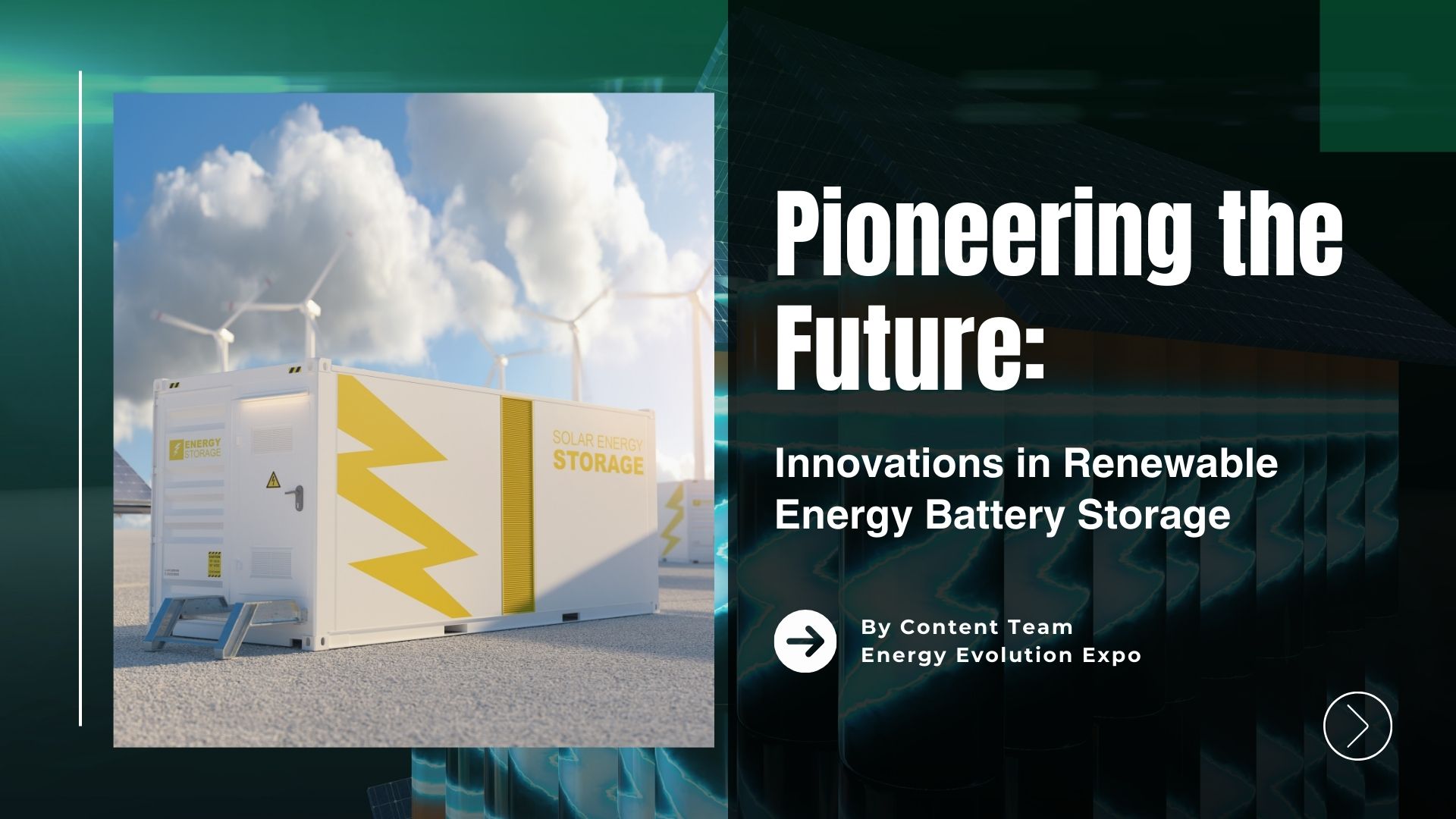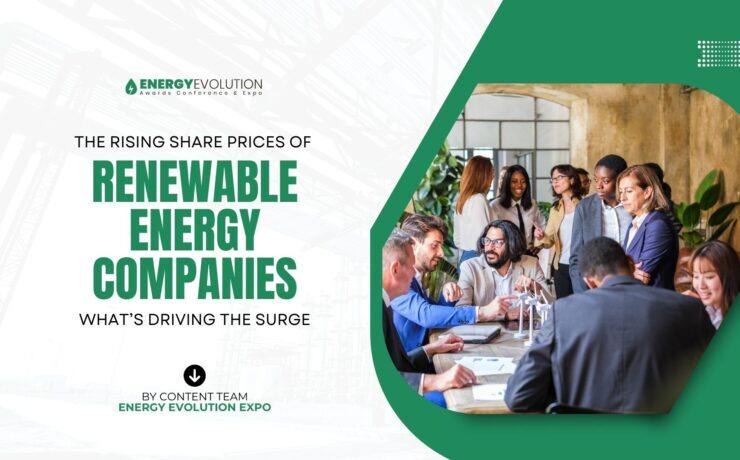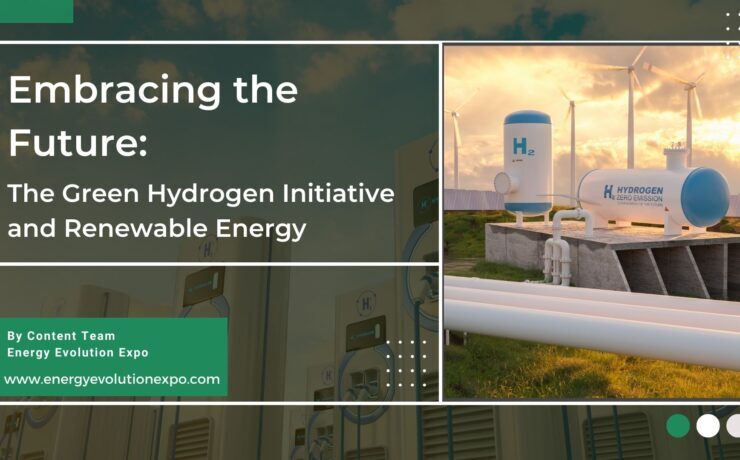Pioneering the Future: Innovations in Renewable Energy Battery Storage

The rapid rise of renewable energy marks a profound shift in how we power our world, but it also brings to light a fundamental challenge: the inconsistency of nature. Solar panels and wind turbines, emblematic of this new era, rely on the sun and wind—forces that are abundant yet unpredictable. This variability makes energy storage not just a technical necessity but a philosophical one, as we seek to harmonize human needs with the rhythms of the natural world.
Traditional solutions like lithium-ion batteries have served us well, yet as we stand on the cusp of a fully renewable future, the demand for more advanced, sustainable, and scalable storage technologies becomes a call to innovation. Enter the world of startups—agile, visionary, and unbound by convention. These pioneers are not simply enhancing what already exists; they are rethinking the very nature of energy storage, crafting new technologies that promise to align the pulse of renewable energy with the steady, reliable flow that our modern lives require.
Through innovations like solid-state and flow batteries, these startups are weaving a future where energy flows as naturally as the wind and sun themselves. This blog will explore how these groundbreaking companies are reshaping the landscape of energy storage and, in doing so, forging a path towards a truly sustainable future.
1. ESS Inc.: Iron Flow Batteries for Grid-Scale Storage
ESS Inc. has developed a long-duration iron flow battery, offering a significant alternative to traditional lithium-ion technology. Unlike lithium-ion batteries, which typically provide up to 4 hours of storage, iron flow batteries can deliver up to 12 hours of energy. This makes them particularly valuable for grid-scale applications where sustained energy release is crucial. Iron flow batteries operate by storing energy in the form of iron chloride and converting it back into electricity through a redox reaction.
The key advantage here is the battery’s durability and longevity. ESS Inc.’s solution is non-toxic, scalable, and cost-effective, addressing many of the concerns associated with traditional batteries, such as safety, resource scarcity, and environmental impact. In 2023, ESS Inc. deployed a significant iron flow battery project in California.
The installation has been crucial in stabilizing the grid during peak demand, particularly during heatwaves when energy consumption spikes. This project has demonstrated that iron flow batteries can provide reliable, long-duration energy storage at a competitive cost, making renewable energy more practical and dependable.
2. Form Energy: The 100-Hour Iron-Air Battery
Form Energy is pioneering an iron-air battery that can provide electricity for up to 100 hours. This breakthrough in long-duration energy storage could be a game-changer for ensuring continuous power supply, even during extended periods of low renewable energy generation, such as prolonged cloudy or windless days.
The iron-air battery works through a process where the battery breathes in oxygen and uses it to convert iron into rust, releasing energy in the process. When recharging, the rust is converted back into iron, ready to store energy again. The simplicity of the materials involved—iron, water, and air—makes this solution highly scalable and affordable, with a projected cost significantly lower than lithium-ion batteries.
In 2024, Form Energy partnered with Xcel Energy to deploy a 100-hour iron-air battery in Minnesota. This project aims to replace aging coal plants, providing a renewable, reliable, and cost-effective alternative for energy storage. The deployment marks a significant step toward decarbonizing the energy grid, offering a solution that could make renewable energy more viable in regions prone to extended periods of low wind or solar generation.
3. Energy Vault: Gravity-Based Energy Storage
Energy Vault is disrupting the energy storage market with its gravity-based energy storage system, a novel approach that leverages gravity and kinetic energy. This system stores energy by using renewable electricity to lift large blocks, storing potential energy that is then released when the blocks are lowered, generating electricity.
The process is both simple and elegant: during periods of excess renewable energy production, cranes lift massive composite blocks (made from waste materials) to a height of about 100 meters. When energy is needed, these blocks are lowered, and the kinetic energy is converted back into electricity via generators.
The system has an efficiency of around 80-90%, comparable to pumped hydroelectric storage but without the need for specific geographical conditions like rivers or large elevation changes. Energy Vault’s technology was showcased in a large-scale project in Italy, where their system was integrated into the local grid. This project highlighted the benefits of gravity-based storage: it’s highly scalable, environmentally friendly, and cost-effective. Unlike chemical batteries, which degrade over time, Energy Vault’s system offers a long operational life with minimal maintenance.
4. Ambri: Liquid Metal Batteries for Grid-Scale Storage
Ambri is developing liquid metal batteries, which utilize a novel combination of antimony and calcium. These batteries are designed for grid-scale energy storage, offering greater safety, a longer lifespan, and lower costs compared to traditional lithium-ion batteries. Liquid metal batteries operate at high temperatures, where the electrodes (antimony and calcium) remain in a liquid state.
This state allows for fast reaction times and excellent conductivity, resulting in efficient energy storage and release. The liquid metal system is self-healing, meaning it can handle extensive charge-discharge cycles without degradation, making it ideal for grid-scale storage where longevity and reliability are critical. In 2023, Ambri secured a contract to supply a large-scale energy storage system in Arizona.
The project supports the integration of solar energy into the grid, enabling consistent power delivery even when the sun isn’t shining. Ambri’s batteries provide a robust solution for energy storage, with the potential to scale significantly as demand for renewable energy grows.
5. Zinc8 Energy Solutions: Zinc-Air Battery Technology
Zinc8 Energy Solutions has created a zinc-air battery that offers long-duration energy storage at a lower cost. The system is highly scalable, making it suitable for a wide range of applications, from small residential installations to large commercial grids. The zinc-air battery operates by oxidizing zinc with oxygen from the air to generate electricity. When recharging, the process is reversed, regenerating the zinc and readying it for another cycle.
One of the standout features of this technology is its modular design, allowing for customization based on energy needs. It also offers a longer life cycle and is safer compared to lithium-ion batteries, as it’s non-flammable and non-toxic. In 2023, Zinc8 partnered with the New York Power Authority to develop a demonstration project.
This project showcases the battery’s ability to store and release energy over extended periods, proving its viability for large-scale renewable energy integration. The success of this project could pave the way for broader adoption of zinc-air batteries in various markets, particularly where long-duration storage is critical.
6. 24M Technologies: Semi-Solid Lithium-Ion Batteries
24M Technologies is revolutionizing lithium-ion battery manufacturing with its semi-solid battery technology. This innovation reduces the complexity and cost of battery production while enhancing energy density and safety. The semi-solid battery design simplifies the manufacturing process by eliminating the need for costly components such as binders and separators.
The result is a battery that is easier and cheaper to produce, with a higher energy density than conventional lithium-ion batteries. This design also improves safety, as the semi-solid electrolyte is less likely to catch fire than the liquid electrolyte used in traditional batteries. In 2024, 24M announced a partnership with Volkswagen to integrate their batteries into electric vehicles (EVs).
This collaboration aims to significantly reduce the cost of EV batteries while improving range and performance, making electric vehicles more accessible to a broader audience. The success of this partnership could lead to widespread adoption of semi-solid batteries across various industries.
7. NantEnergy: Zinc-Air Rechargeable Batteries
NantEnergy has developed a zinc-air rechargeable battery that is both cost-effective and environmentally friendly. Their technology is particularly well-suited for microgrids and off-grid applications, providing reliable energy storage in remote areas. NantEnergy’s zinc-air battery is designed to be recharged by reversing the chemical reaction that occurs when zinc oxidizes in the presence of oxygen. The system is scalable, non-toxic, and doesn’t rely on rare earth elements, making it a sustainable alternative to traditional battery technologies. Additionally, the batteries have a long shelf life and can operate in a wide range of temperatures, making them ideal for diverse environments. In rural Africa, NantEnergy has deployed their zinc-air technology to provide reliable and affordable energy storage for off-grid communities. These installations have enabled access to electricity where traditional grid infrastructure is not feasible, empowering local economies and improving quality of life.
NantEnergy’s work demonstrates the potential of zinc-air batteries to transform energy access in underserved regions worldwide. We need to keep up with all recent innovations to reap maximum benefits and to facilitate a better understanding of the latest developments and trends in the Renewable energy Industry, various Conferences and Expos, which bring Industry leaders together, serve as an all-inclusive platform. The Energy Evolution Awards, Conference, and Expo organized by Next Business Media is making its debut in Spain in 2025.
It will be a leading forum dedicated to honoring excellence in Energy Technology, showcasing innovations, and fostering collaborations. The events unite industry leaders, and visionaries to explore the latest advancements, tackle key challenges, and shape the future of Energy. The Energy Evolution Awards, Conference, and Expo will celebrate outstanding achievements, promote sustainable practices, and drive the Energy Industry forward into a technologically advanced sustainable era. Energy Evolution Awards, Conference, and Expo will be a platform for cultivating innovation and shaping a brighter, more efficient energy landscape.






